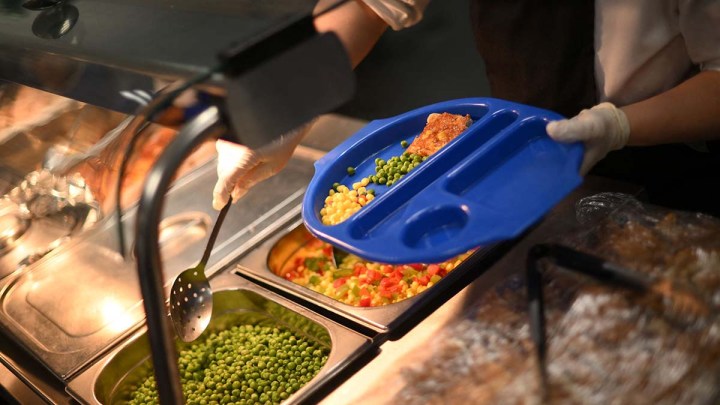
USDA proposes rules to expand access to free school lunches
USDA proposes rules to expand access to free school lunches

Earlier in the pandemic, lots of public school districts were offering free meals to all of their students, thanks to federal waivers that allowed those districts to get reimbursed.
Since that program expired in September, it’s been back to the old system for most states, where most of the burden is on low-income families to fill out a bunch of paperwork to get their kids free or reduced-price meals. But the U.S. Department of Agriculture is looking to help more school districts cover the costs of universal free meals.
The USDA’s Community Eligibility Provision helps school districts where at least 40% of students benefit from SNAP, or the Supplemental Nutrition Assistance Program. That puts universal free meals just out of reach for the Greeley-Evans School District 6 in northern Colorado.
“Thirty-four percent of our students are living in households receiving SNAP benefits,” said Danielle Bock, the district’s director of nutrition. And over 60% are eligible for free or reduced-price meals.
So her staff spends a lot of time processing individual applications for assistance.
“We have to be able to identify if this particular student in this particular school in this particular line is eligible to receive that free meal,” Bock said.
The USDA’s proposal to lower the threshold to 25% of students on SNAP would reduce that administrative burden.
“It allows us to focus more on the quality of the meal,” Bock added.
Universal free meals kept a lot of kids from going hungry at the height of the pandemic, according to education researcher Emily Gutierrez at the Urban Institute. “Particularly at a time when inflation is at an all-time high,” she said. “It’s something that students have gotten used to, that families have gotten used to.”
But even some eligible districts opt out of offering free meals because federal reimbursements for those meals are only partial. President Joe Biden’s proposed budget would help more schools take advantage, said Crystal FitzSimons at the Food Research and Action Center.
“It would dramatically increase the amount of funding that these high-needs schools are receiving and make it much more financially viable,” FitzSimons said.
For Danielle Bock in the Greeley-Evans School District, one benefit of pandemic-era free meals stands out: “We identified an immediate relief from that shame and that stigma that is associated with being a ‘free lunch kid.’“
Or from racking up lunch debt. If her district becomes eligible for the USDA’s expanded free lunch program, Bock said that’s another thing her staff won’t have to deal with anymore.
There’s a lot happening in the world. Through it all, Marketplace is here for you.
You rely on Marketplace to break down the world’s events and tell you how it affects you in a fact-based, approachable way. We rely on your financial support to keep making that possible.
Your donation today powers the independent journalism that you rely on. For just $5/month, you can help sustain Marketplace so we can keep reporting on the things that matter to you.











